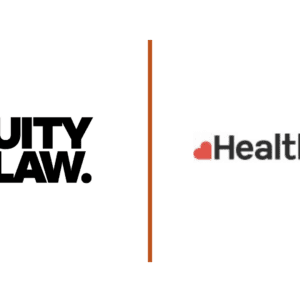Coronavirus Job Retention Scheme Update – 14 April 2020
In a third round of updates published on Thursday evening, 9 April, the Government has provided additional clarification on the Coronavirus Job Retention Scheme (the Scheme).
Somewhat remarkably, the latest round of updates still doesn’t provide any further information regarding the interaction between furlough leave and holiday. We cannot confirm with any certainty whether treating the Good Friday and Easter Monday bank holidays that have just passed as “holiday” would break the minimum 3 consecutive week period of furlough leave, or not. In the absence of further guidance, we are maintaining the position that employers should proceed with caution and treat bank holidays as normal working days for furloughed employees (offering days in lieu of the bank holidays to be taken at a later date) to mitigate the risk of breaking furlough and jeopardising reimbursement. Please see our note on furlough leave and annual leave, which can be accessed here, for more information.
This update summarises the latest round of updates and supplements the other guidance that we have produced over the last few weeks, which can be accessed here and here. If you have any queries which are not addressed within this note or our other updates, please contact out employment team.
This guidance note is does not constitute formal legal advice and is guidance commentary only.
“Go Live” Date – Claiming under the Scheme
The latest guidance is non-committal on when the online service will be available for employers to submit claims for reimbursement. It states, “we expect it to be available by the end of April 2020”. However, we are hearing repeated reports that the online service will be available on 20 April 2020, and believe HMRC are working hard to this deadline. Employers are encouraged to make a note of this date as our understanding is that claims will be actioned on a first come, first served basis.
Following which, we understand that the first tranche of payments will not be made until late May 2020. Therefore, businesses will need to plan their cash-flow to cover wages until at least end of June payroll.
In respect of making a claim, updated guidance has been published and the following information will need to be provided by employers when submitting a claim through the portal:
- National Insurance Numbers for the furloughed employees
- names of the furloughed employees
- payroll/works number for the furloughed employees
- self-Assessment Unique Taxpayer Reference or Corporation Tax Unique Taxpayer Reference or Company Registration Number
- the claim period (start and end date)
- the number of employees claimed for
- employer PAYE reference number
- amount claimed (per the minimum length of furloughing of 3 consecutive weeks)
- bank account number and sort code
- contact name
- phone number
We also anticipate that the portal will require a confirmation that the information provided is complete and accurate and employers must be mindful that HMRC will also “retain the right to retrospectively audit all aspects of your claim.”
Sickness and Furlough Leave
Whilst this was inferred in previous Government guidance, the new guidance provides clarity that it is reasonable for an employer to place someone who would otherwise be on sick leave on furlough leave instead in order for that employee to receive pay at 80% / £2500 a month, rather than SSP only (currently £95.85 per week). Of course, the employee would still need to be furloughed for the minimum 3 week period, and the guidance specifically states that the Scheme “is not intended for short-term absences from work due to sickness… short term illness/ self-isolation should not be a consideration in deciding whether to furlough an employee. If, however, employers want to furlough employees for business reasons and they are currently off sick, they are eligible to do so”.
As such, employers should expect to receive requests from employees who are currently on sick leave to be placed on furlough leave as an alternative. This is particularly so for those employees who have already exhausted their sick pay entitlement or are receiving a reduced salary e.g. half pay or statutory sick pay. In such circumstances, it will be at the employer’s discretion to grant furlough leave as an alternative but should be mindful of the commercial and legal implications of doing so later down the line.
Similarly, employers may wish to place “sick” employees on furlough leave with the intention of recovering part of their sick pay under the Scheme. This is particularly so for those employees who are entitled to enhanced contractual sick pay entitlements. However, in such circumstances, employers need to be mindful that sick leave and furlough leave cannot run concurrently. Therefore, whilst it may give an employer the opportunity to access some financial support now, the employee’s longer-term entitlement to enhanced sick pay will be extended. Businesses should therefore assess the commercial benefits of placing the employee on furlough leave versus requiring the employee to use up their enhanced sick pay entitlement.
Where sick pay terms are contractual, it is advised that sick leave and sick pay arrangements during a period of furlough leave are clarified. If employers wish to reduce employees’ sick pay entitlements during this period. However, as such changes would amount to a contractual variation, employee agreement should be obtained at the outset, which may already be too late for those employees who have already been furloughed.
We recommend that businesses carefully assess how best to manage sick leave and furlough leave and avoid a one-fits-all approach. There are wider commercial and legal considerations that should be assessed alongside the details of this note, for which legal advice is recommended.
Furlough and VISAs
The new guidance confirms that foreign nationals can be furloughed and that “grants under the scheme are not counted as ‘access to public funds’… you can furlough employees on all categories of visa”. This ties in nicely with the message delivered by Matthew Fell, Policy Director at the CBI, who confirmed during a live broadcast on Thursday last week that the Home Office is relaxing various requirements to minimise disruption to individuals and businesses during this time – for example, they have confirmed that “right to work” checks can be done via video link, scanned copies of various documents are being accepted and perhaps most importantly, they have confirmed that individuals who cannot renew their visa because of the coronavirus outbreak will not be treated as over-stayers.
For more advice on these changes, please contact our employment team.
TUPE
This was a question that had sparked debate within the legal sector, but the new guidance confirms that employees who have transferred to a business pursuant to the Transfer of Undertakings (Protection of Employment) Regulations 2006 (TUPE) after 28 February 2020 (i.e. who weren’t on the relevant businesses’ payroll on the 28 February, so otherwise wouldn’t be eligible for furlough) can be furloughed and the new employer can be reimbursed under the Scheme. This is welcome clarification for transferee businesses and is consistent with the principle of continuous service being preserved pursuant to a TUPE transfer.
Employer Pension and NI Contributions
The new guidance provides clarification that the amount employers will be reimbursed for employer pension contributions and NICs will be calculated on the reduced furlough pay, not the employee’s normal pay. We expected this to be the case, but it is useful to get clarification.
Payroll
A small point, but the new guidance specifically clarifies that if businesses outsource their payroll to a payroll “agent” who is authorised to act for the business for PAYE purposes, the agent can claim under the Scheme on the businesses’ behalf. The new guidance also confirms that businesses that engaged in payroll consolidation schemes after 28 February 2020 can place employees on furlough.
Undertaking work during a furlough period – “Linked” businesses
Government guidance has been clear from the outset that furloughed employees cannot undertake any work (except for training) for their employer, if their employer is going to be able to claim for their wages under the Scheme. This is a fairly black and white rule and employers are advised to comply if they don’t want to jeopardise their claims under the Scheme.
However, new Government guidance takes this a step further and states that employees cannot undertake any work, not only for their employer but also, for “any organisation linked or associated” with that employer. What “linked or associated” means is unclear – as in, whether it is intended to encompass group companies only (we think this is correct) or any businesses that are “linked” (for example, purchaser and supplier). Whilst an “associated” employer is a recognised term in employment law, “linked” is not, and we would accordingly welcome further explanation from the Government on this point.
“Shielders”
The new Government guidance has provided further confirmation that those employees who are shielding for health reasons, or who need to stay at home with someone who is shielding pursuant to public health guidance, can be furloughed. Interestingly, the requirements of “…they are unable to work from home” and “…would otherwise have to make them redundant (the employer)”, have been removed. Therefore, there is no longer any conditions on the ability for these employees to be furloughed.
Salary Sacrifice
The new Government guidance clarifies “All the grant received to cover an employee’s subsidised furlough pay must be paid to them in the form of money. No part of the grant should be netted off to pay for the provision of benefits or a salary sacrifice scheme.”
As such, the reduced, post salary sacrifice salary, should be used for the purposes of a claim under the Scheme and the responsibility to pay for any ongoing benefits, including through a salary sacrifice scheme, must continue to be met by the employer.
No deductions can be made from the monies claimed
The new Government guidance states: “Furloughed staff must receive no less than 80% of their reference pay (up to the monthly cap of £2500).” Therefore, employers cannot reduce wages below this level for employees who would be the subject of a claim under the Scheme.
The latest Government guidance provides useful detail on how the Scheme will operate, responding to those ongoing calls for clarity . Nonetheless, as above, there remains clear gaps, particularly in relation to annual leave during a period of furlough. We hope that further guidance will be provided on this point this week, as it is becoming one of the most hotly debated areas of employment law for quite some time!
Nonetheless, what is worrying for both employers and employees is that the Scheme is only available until 31 May 2020 and there is no guarantee or mention of any extension. Employers are therefore being forced to consider their longer-term plans and if stricter cost saving measures need to be implemented. Such as, reduced pay arrangements, redundancies or the removal of employee benefits. One saving grace for employers is that the Scheme does not prevent employers from making these changes now, either before or after the 31 May deadline date. Therefore, if stricter cost-saving measures need to be implemented post May, employers can start this process immediately and we encourage them to start planning for this sooner rather than later. In such circumstances, the usual rules regarding redundancy procedures, consultation requirements and unfair dismissals continue to apply, and employers are advised to seek legal advice.
For more information, please contact our employment team.
Claire Knowles – Partner
Mark Alaszewski – Associate
Rebecca Mahon – Solicitor
Adam McGlynn – Trainee Solicitor






